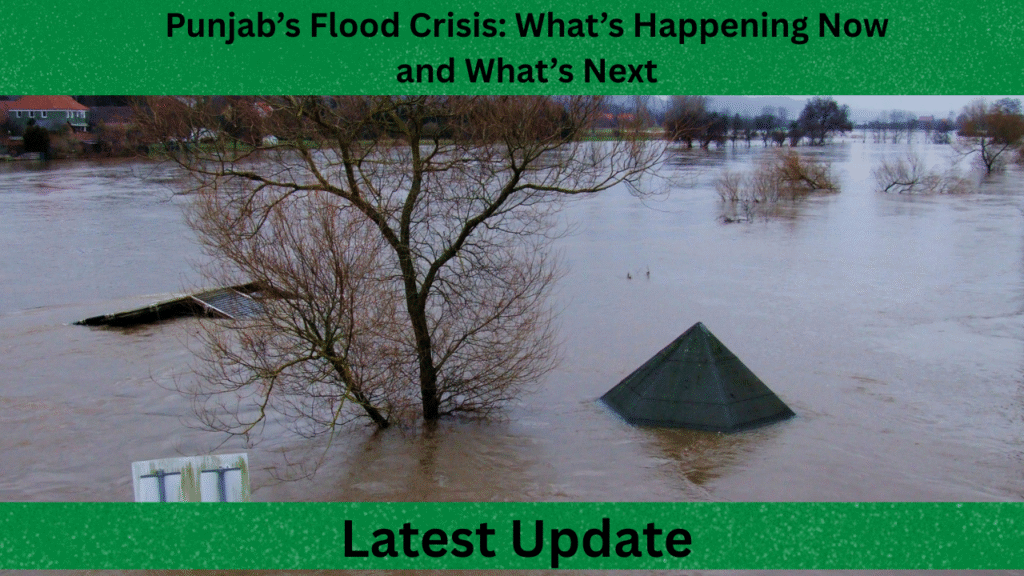
Heavy rains and river swells have once again put Punjab, Pakistan, in the spotlight as floods sweep across the province. June and July 2024 have brought scenes of submerged villages, washed-out roads, and desperate evacuations. As families grapple with rising waters, the flood’s impact on towns, agriculture, and daily life has grown too big to ignore. With climate change driving unpredictable weather, responding to these floods becomes more urgent each year.
Current Flood Situation in Punjab, Pakistan
Punjab’s flood emergency isn’t just about water in the streets—it’s entire communities facing disruption. Relentless rains during June and July 2024 have swelled the Ravi, Chenab, and Sutlej rivers beyond safe levels. Each day, more homes and shops stand knee-deep in muddy water.
Affected Districts and Severity
Floodwaters have battered central and southern Punjab the hardest. Some of the most affected districts include:
- Lahore: Urban flooding overwhelmed drains and left neighborhoods waterlogged.
- Muzaffargarh: Riverbanks burst, forcing thousands to flee.
- Rahim Yar Khan, Bahawalpur, and Dera Ghazi Khan: Villages evacuated as water rose past safety thresholds.
- Jhang and Layyah: Fields drowned, and rural communities cut off.
- Pind Dadan Khan:Huge descruction takes off in this discrict Fields drowned, and rural communities cut off.
According to local reports, over two dozen towns have faced large-scale evacuation. In some places, entire families camp on elevated roadsides, waiting for rescue boats. As of early July, authorities reported over 50,000 people displaced or at risk.
Meteorological Causes and Climate Change Impact
This year’s monsoon came heavy and fast. Three days of non-stop rain in late June pushed rivers and canals past warning marks. In the first week of July alone, rainfall in some districts exceeded the monthly average, causing flash floods and riverbank breaches.
Several climate experts warn that changing weather patterns have made such events more common. The region now faces:
- Longer, more intense rain spells
- Hotter spring seasons that increase glacier melt upstream
- Higher chances of sudden flash floods
Combined, these factors turn seasonal rains into widespread disaster.
Government and Local Response Efforts
Local authorities acted quickly once water started rising. Rescue teams from the Punjab Disaster Management Authority (PDMA) teamed up with Pakistan Army units and volunteers from aid groups. Key steps included:
- Deploying evacuation teams in boats and trucks
- Setting up over 120 relief camps with food, clean water, and first aid
- Distributing emergency supplies like tents and dry rations
- Temporary closures of dangerous roadways and rail lines
Despite efforts, challenges remain. Many rural spots are hard to reach, and supply shortages stretch thin as the floods continue. Social media is full of calls for help, with residents sharing live updates on stranded loved ones and dire conditions.
Socio-Economic Impact and Future Outlook
Floods in Punjab don’t just soak streets—they wash away months of hard work and grind daily routines to a halt. The 2024 floods are no exception, leaving lives in turmoil and forcing questions about what comes next.
Humanitarian and Economic Consequences
Displacement and loss: Tens of thousands of people are now homeless, sleeping in schools or makeshift camps. Some carry only what they could grab as the water rose.
Agriculture hit hard: Punjab is Pakistan’s breadbasket. Floods have damaged large areas of cotton, wheat, and rice fields right at the growing season. For many small farmers, this means lost earnings and food shortages in the months ahead.
Livestock and property loss: Thousands of cattle, goats, and chickens have died or disappeared. Simple homes, roadside shops, and public buildings have been battered or swept away.
Infrastructure collapse: Roads and bridges in several remote areas are still underwater or washed out. Power outages have hit cities and villages alike, making communication and recovery even harder.
Community toll: The stress and uncertainty weigh heavily on survivors. Health risks grow with every passing day without clean water or proper toilets.
Long-Term Solutions and Preparedness Measures
Surviving each flood isn’t enough. Punjab needs bigger changes to break this damaging cycle. Both government and communities are starting to look at:
Immediate needs
- Stockpiling relief supplies in high-risk zones before monsoon season
- Training local rescue teams and volunteers
- Strengthening temporary shelters with better sanitation and security
Building for the future
- Installing real-time river and rainfall monitoring systems for better early warning
- Investing in stronger river embankments, drainage, and small dams
- Reviewing city drainage plans to cope with urban flash floods
- Promoting sustainable farming techniques that hold water without harming crops
Climate policy adjustments
- Aligning national laws with emerging climate risks
- Reforesting upstream areas to slow runoff
- Building local awareness about emergency steps
When government, scientists, and local citizens share information and act together, future floods won’t catch Punjab unprepared.
Conclusion
Punjab’s struggle with floods in June and July 2024 isn’t just another rainy season—it’s a call to rethink how we protect families and farms. As rivers keep rising and new risks appear, quick response and long-term changes are no longer optional. Now is the time to support local volunteers, demand smarter planning, and stay alert for what the weather brings next.
It’s on all of us to pay attention, spread the word, and help push for real solutions—so Punjab’s communities can rebuild stronger and safer.
For more updates stay connected to Pyara Punjab
